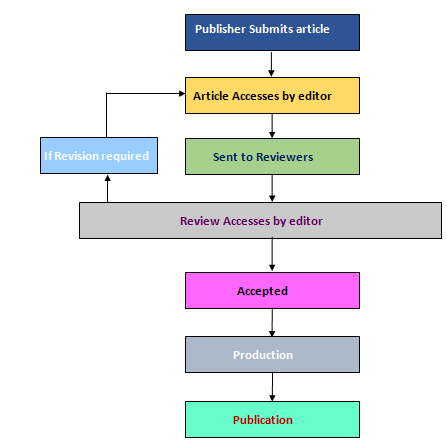Peer review is the process by which journals scrutinize and regulate the quality of the content they publish, by inviting experts in the field to review and comment on manuscripts they receive.
Manuscripts submitted to a journal first go through an initial screening by the editorial team.
Those that clear the screening are sent to at least two experts for peer review.
Peer reviewers independently make a recommendation to the journal editor as to whether the manuscript should be rejected or accepted (with or without revisions).
The journal editor considers all the feedback from peer reviewers and makes an informed decision to accept or reject the manuscript.
Peer review is the method used to evaluate the quality of a manuscript before it is published online. It plays a vital role in academic publishing by ensuring the desirable quality with which a manuscript is checked, revised, and edited for publication, proceeding on this track with the guidelines and rules of COPE.
The peer review process plays a vital role in defining the quality of the article. Its ultimate purpose is to maintain the integrity of science.
However, there are different types of peer-review processes; NISTEMR is following the double-blind peer-review process, which does not reveal the identity of either the author or the reviewer. The journal adopts a double-blind review process, which is closely examined by the editors and editorial team. Editors undertake an editorial review to evaluate the quality and type of a manuscript before processing it for the review process.Manuscripts that do not meet the required criteria or scientific standards will not be considered for the review process.
We publish only high-quality articles in relevant journals. Therefore, validating the manuscript before publication online and keeping it in front of the readers is essential. This is the major rationale why the “peer review process” is such a noteworthy task. It is done to improve quality and publish only the best.

In this section
Understanding the peer-review process
Our informative infographics about peer review will walk you through the process from beginning to end. We also break down the several types of peer review models (such as single, double, triple, open, and collaborative) and discuss their benefits and drawbacks.
Become a Reviewer
Have questions about the peer review process or whether you should accept an invitation to participate as a reviewer? We discuss how to make the shift from writer to reviewer, as well as the many advantages of reviewing.
Reviewer guidelines
At NISTEMR, we discuss the practicalities of peer review and highlight points to consider both before and during the process.
Types of Journal Peer Review Process
- Single-blind review
- Double-blind review
- Open review
- More transparent peer review
- Collaborative review
- Post-publication review
- Triple-blind peer-review
Single-blind Review
In the single-blind review process, the names of the reviewers are hidden from the author. This is the traditional method of reviewing and is by far the most common type.
Double-blind Review
In the double-blind review process, both the reviewer and the author are anonymous.
Open Review
In this open review, the reviewer and author are known to each other.
More transparent Peer Review
The reviewers know the authors’ names, but unless the reviewer chooses to sign their report, the authors have no idea who reviewed their manuscript. If the manuscript is accepted, the anonymous reviewer reports and the authors’ response to the reviewer are published alongside the article and the authors’ response to the reviewer.
Collaborative Review
The collaborative review has two formats, in one format, two or more reviewers work together to review the paper, discuss their opinions, and submit a unified report.
Post-publication Review
With this type of peer review, the option for appraisal and revision of a paper continues—or occurs—after publication. This may take the form of a comments page or discussion forum alongside the published paper.
Triple-blind Peer-Review
In this triple-blind peer review process, both the reviewers and the handling editors cannot know the identity of the authors or institution during the review process. Also, the identity of the authors is revealed only after the article is published. The authors cannot see who reviewed the document.
Why review?
- Reviews establish you as an expert in your field of study. This is a great way to improve your academic or professional reputation.
- Opportunity to read cutting-edge research before publication.
- Reviews provide an ideal opportunity to practice critical thinking skills in a private space.
- You can return the favour—you are very likely a published author, which means others have found the time to review your papers, and now you can repay the courtesy.
- Building a relationship with a journal’s editorial team increases your chances of being invited to join its editorial advisory or review board.
- You could be recognized for your efforts; each year editors are asked to nominate outstanding reviewers for our Literati Awards.
